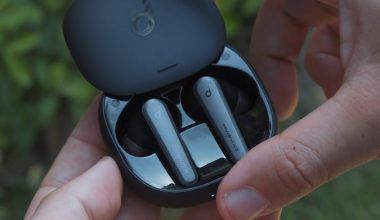Do you want to share your music with the world but don’t want to rely on a distributor? This guide will show you how to submit your music on all digital stores without a distributor. It’s easier than you think, and with a little patience, you can release your tracks globally while keeping full control over your music.
Why Avoid a Distributor?
Music distributors like Deliver My Tune, TuneCore, or DistroKid can make your life easier by handling the technical work of uploading songs to platforms like Spotify, Apple Music, and Amazon Music. However, distributors often charge fees or take a cut of your royalties, which may not be ideal for everyone.
If you want to save money, control your royalties, or just learn how the system works, submitting your music yourself is an excellent choice.
Benefits of Self-Submission
- Full Control: You own 100% of your royalties and decide where your music goes.
- Cost-Effective: Avoid yearly fees or commission cuts.
- Transparency: Track your progress without depending on middlemen.
- Learning Experience: Understand the music distribution process and how digital platforms operate.
Now, let’s dive into the steps to submit your music to digital stores without a distributor.
1. Get Your Music Ready
Before you start, make sure your music meets the requirements of digital platforms. High-quality audio and professional presentation are key.
a. Create High-Quality Audio
Use lossless audio formats like WAV or FLAC for the best sound quality. Avoid low-bitrate MP3 files or anything with distortion. Platforms like Spotify expect professional-grade audio to maintain their standards. You can use AI mastering services like the one offered by Deliver My Tune to polish your tracks and ensure they’re radio-ready.
b. Prepare Metadata
Metadata includes your song title, artist name, album title, genre, release date, and more. Consistent and accurate metadata is crucial because it ensures your music is correctly displayed across platforms.
c. Design Eye-Catching Cover Art
Most digital stores require square artwork with a resolution of at least 3000×3000 pixels. Your cover should be visually appealing and relevant to your music theme. Avoid using copyrighted images or adding too much text.
2. Obtain ISRC and UPC Codes
Every song needs an ISRC (International Standard Recording Code), and every release (single, EP, or album) needs a UPC (Universal Product Code). These codes act as unique identifiers for your music.
You can register for ISRC and UPC codes through organizations like:
- National ISRC Agencies
- Music platforms that offer self-registration options, like Bandcamp or ReverbNation
Some platforms also generate these codes for free or at a small cost. Remember to keep these codes safe for future releases.
3. Choose Your Target Platforms
Each platform has its own submission process and requirements. Here are some of the most popular digital music stores and how to approach them:
- Spotify: Use Spotify for Artists to pitch your music directly. Ensure you have a verified Spotify Artist account for better chances of playlist placement.
- Apple Music: Apple offers a process called Apple Music for Artists, where you can directly submit your music after verification.
- SoundCloud: You can upload your music directly to SoundCloud without additional tools.
- Bandcamp: This platform allows artists to upload music, set prices, and sell directly to fans.
- YouTube Music: You can upload your music to YouTube as a video or through YouTube Studio for proper tagging.
Research each platform’s guidelines to understand what they expect from independent artists.
4. Submit Your Music to Each Store
Once your tracks, metadata, and artwork are ready, you can begin the submission process. Here’s a general outline:
- Create an Artist Profile: Most platforms require you to create an account or artist page before submitting music. This includes platforms like Spotify, Apple Music, and Amazon Music.
- Upload Your Track: Follow the platform’s instructions to upload your audio file and artwork.
- Input Metadata: Fill out all the details accurately, including song title, genre, and release date.
- Verify Rights: Confirm that you own the rights to your music and artwork.
5. Use Free Tools to Simplify the Process
Submitting to multiple platforms can be time-consuming, but some free or low-cost tools can help. For instance:
- Amuse: A platform that helps you distribute music for free while retaining royalties.
- Horus Music: Offers simple DIY distribution without recurring fees.
These tools are less hands-on than services like Deliver My Tune, but they’re great if you’re on a tight budget.
6. Promote Your Music
Getting your music onto digital stores is only half the battle. You need to market your songs to reach your audience. Here are a few tips:
- Social Media Campaigns: Share links to your tracks on Instagram, Twitter, and Facebook.
- YouTube Videos: Create lyric videos or behind-the-scenes clips to engage fans.
- Collaborate with Influencers: Partner with content creators who can share your music with their followers.
- Email Marketing: Send updates to your mailing list with direct links to your songs.
7. Track Your Progress
Once your music is live, monitor its performance using analytics tools provided by platforms like Spotify for Artists and Apple Music for Artists. These tools let you see how many streams you’re getting, where your listeners are from, and more.
Pros and Cons of DIY Distribution
Pros:
- You save money.
- You maintain control over your music and royalties.
- It’s a great learning experience.
Cons:
- Time-consuming process.
- Limited reach without proper promotion.
- Lack of features like playlist pitching (offered by services like Deliver My Tune).
When Should You Use a Distributor?
If the DIY approach feels overwhelming, you can always turn to a music distributor. Companies like Deliver My Tune handle everything for you—from submitting your music to 100+ platforms to offering playlist pitching and artist verification. This saves time and ensures a professional experience.
Submitting your music on all digital stores without a distributor takes effort but is completely doable. By following these steps, you can share your work with the world, retain control, and learn valuable skills along the way. Whether you go solo or seek help from a platform like Deliver My Tune, what matters most is that your music reaches listeners everywhere.
So, are you ready to take the leap? Start your journey to independent music distribution today!
Related Articles:
For further reading, explore these related articles:
- How to Submit Your Music on All Digital Stores Step-by-Step
- Submit Your Music on All Digital Stores for Free – A Complete Guide for Independent Artists
For additional resources on music marketing and distribution, visit DMT RECORDS PRIVATE LIMITED.






